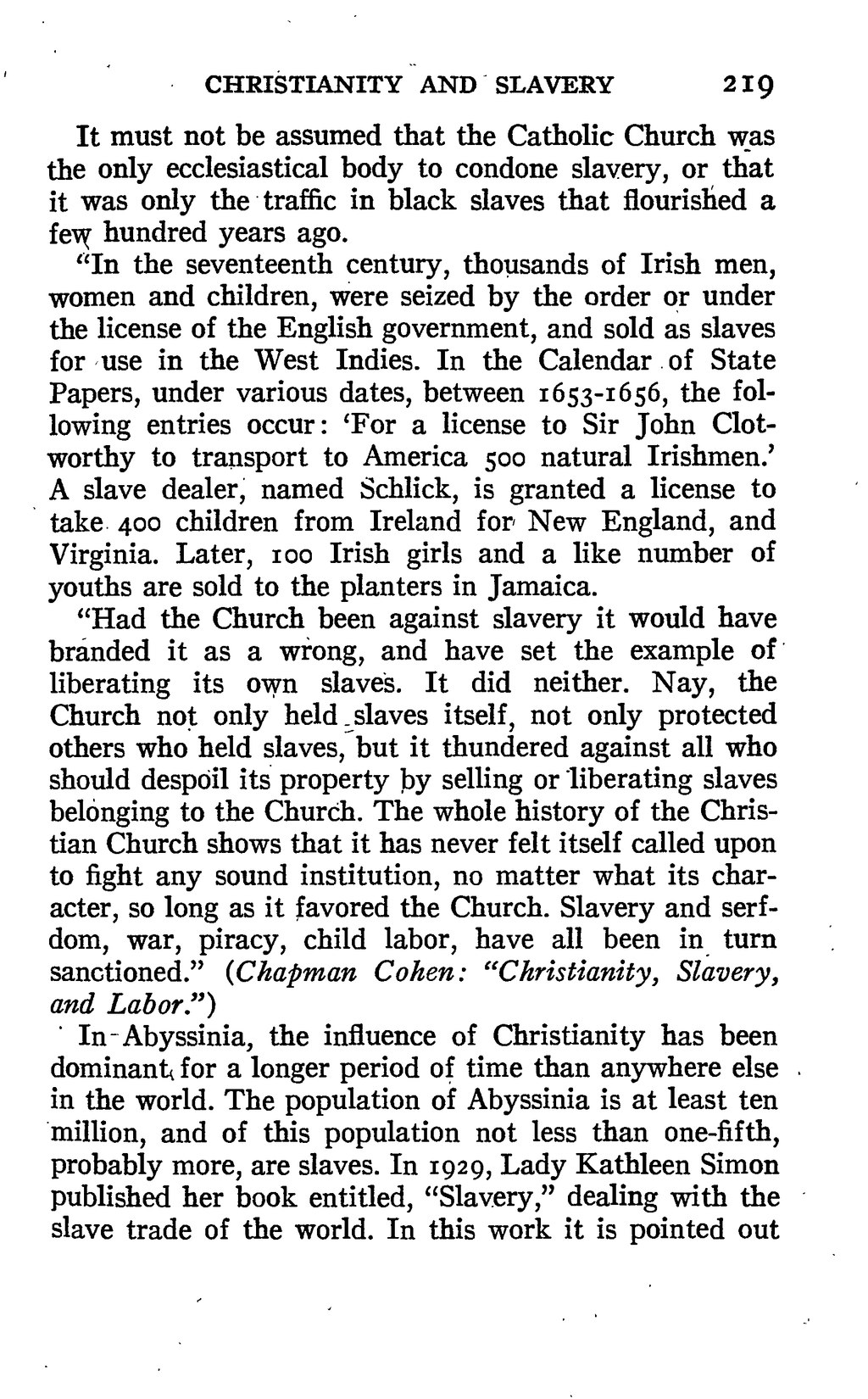It must not be assumed that the Catholic Church was the only ecclesiastical body to condone slavery, or that it was only the traffic in black slaves that flourished a few hundred years ago.
"In the seventeenth century, thousands of Irish men, women and children, were seized by the order or under the license of the English government, and sold as slaves for use in the West Indies. In the Calendar of State Papers, under various dates, between 1653-1656, the following entries occur: ’For a license to Sir John Clotworthy to transport to America 500 natural Irishmen.’ A slave dealer, named Schlick, is granted a license to take 400 children from Ireland for New England, and Virginia. Later, 100 Irish girls and a like number of youths are sold to the planters in Jamaica.
"Had the Church been against slavery it would have branded it as a wrong, and have set the example of liberating its own slaves. It did neither. Nay, the Church not only held slaves itself, not only protected others who held slaves, but it thundered against all who should despoil its property by selling or liberating slaves belonging to the Church. The whole history of the Christian Church shows that it has never felt itself called upon to fight any sound institution, no matter what its character, so long as it favored the Church. Slavery and serfdom, war, piracy, child labor, have all been in turn sanctioned." (Chapman Cohen: "Christianity, Slavery, and Labor.")
In Abyssinia, the influence of Christianity has been dominant for a longer period of time than anywhere else in the world. The population of Abyssinia is at least ten million, and of this population not less than one-fifth, probably more, are slaves. In 1929, Lady Kathleen Simon published her book entitled, "Slavery," dealing with the slave trade of the world. In this work it is pointed out
